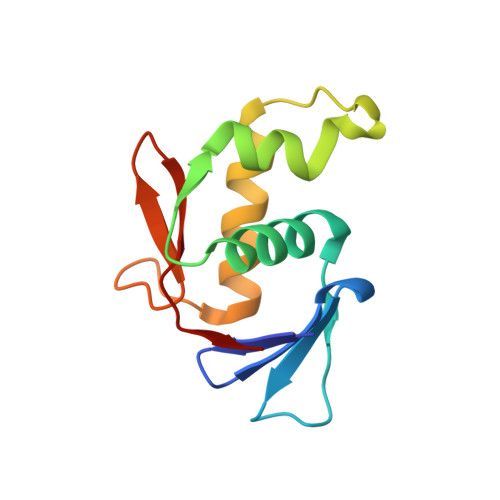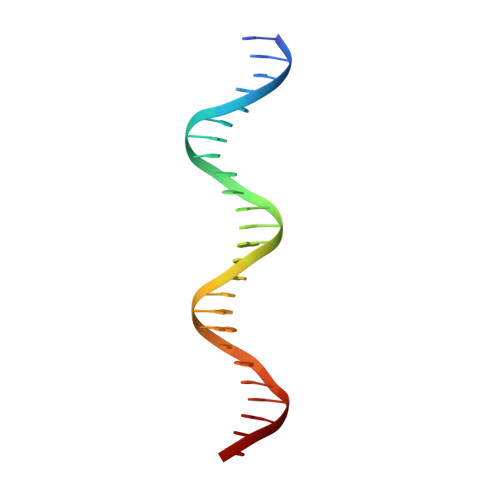ToxR activates the Vibrio cholerae virulence genes by tethering DNA to the membrane through versatile binding to multiple sites.
Canals, A., Pieretti, S., Muriel-Masanes, M., El Yaman, N., Plecha, S.C., Thomson, J.J., Fabrega-Ferrer, M., Perez-Luque, R., Krukonis, E.S., Coll, M.(2023) Proc Natl Acad Sci U S A 120: e2304378120-e2304378120
- PubMed: 37428913
- DOI: https://doi.org/10.1073/pnas.2304378120
- Primary Citation of Related Structures:
8B4B, 8B4C, 8B4D, 8B4E - PubMed Abstract:
ToxR, a Vibrio cholerae transmembrane one-component signal transduction factor, lies within a regulatory cascade that results in the expression of ToxT, toxin coregulated pilus, and cholera toxin. While ToxR has been extensively studied for its ability to activate or repress various genes in V. cholerae , here we present the crystal structures of the ToxR cytoplasmic domain bound to DNA at the toxT and ompU promoters. The structures confirm some predicted interactions, yet reveal other unexpected promoter interactions with implications for other potential regulatory roles for ToxR. We show that ToxR is a versatile virulence regulator that recognizes diverse and extensive, eukaryotic-like regulatory DNA sequences, that relies more on DNA structural elements than specific sequences for binding. Using this topological DNA recognition mechanism, ToxR can bind both in tandem and in a twofold inverted-repeat-driven manner. Its regulatory action is based on coordinated multiple binding to promoter regions near the transcription start site, which can remove the repressing H-NS proteins and prepares the DNA for optimal interaction with the RNA polymerase.
- Institute for Research in Biomedicine (IRB Barcelona), The Barcelona Institute of Science and Technology, 08028 Barcelona, Spain.
Organizational Affiliation:


















